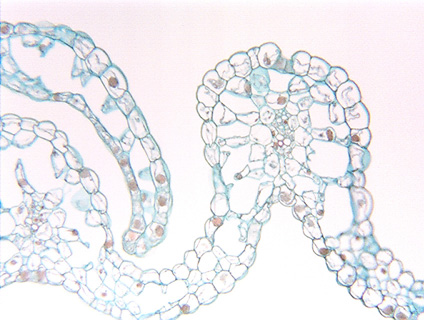 Fig.
10.2-7. Transverse section of petal of
dog’s-tooth violet (actually a lily, not a violet; Erythronium).
Petals, stamens, and styles are usually just ephemeral
organs, that is, they last only one or two days. They typically have
a very thin and delicate epidermis: the plant appears to expend as few resources
as possible on their construction. This petal of Erythronium shows that
the entire petal, not just the epidermis, is very lightly constructed. In
contrast, the petals of some flowers, such as orchids, often last for weeks or
months and will have a more substantial epidermis.
Fig.
10.2-7. Transverse section of petal of
dog’s-tooth violet (actually a lily, not a violet; Erythronium).
Petals, stamens, and styles are usually just ephemeral
organs, that is, they last only one or two days. They typically have
a very thin and delicate epidermis: the plant appears to expend as few resources
as possible on their construction. This petal of Erythronium shows that
the entire petal, not just the epidermis, is very lightly constructed. In
contrast, the petals of some flowers, such as orchids, often last for weeks or
months and will have a more substantial epidermis.